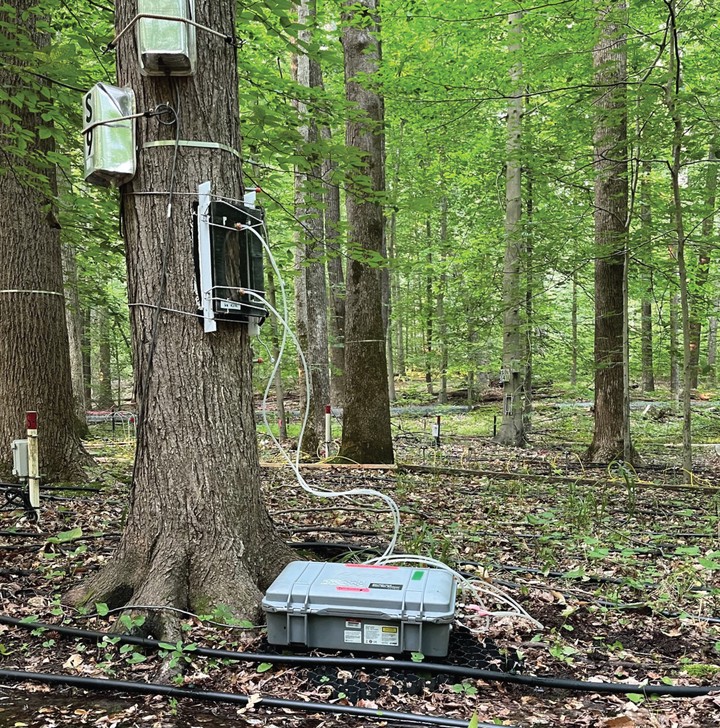Tree Methane and Trace Gas Cycling
 Tree methane measurements made at the TEMPEST flood manipulation experiment in Edgewater, MD
Tree methane measurements made at the TEMPEST flood manipulation experiment in Edgewater, MDThe outer surfaces of trees comprise roughly the same surface area as Earth’s landscape1 (~150 million km2) and exchange important trace gaseswith the atmosphere such as methane (CH4) and nitrous oxide (N2O). Nevertheless, Earth system models (ESMs) do not represent the cycling of these trace gases within and across woody surfaces, and global estimates of the size and direction of this TG flux are highly uncertain. The few attempts to globally scale tree stem CH4 fluxes estimate that trees either emit or remove nearly as much CH4 as the global upland soil CH4 sink of 30–40 Tg/yr. No attempt has been made to globally scale tree N2O emissions. Even a slight over- or underestimation of the rate or direction of CH4 and N2O transport by trees will propagate to a globally significant flux because of the massive surface area they represent. The woody surfaces of trees potentially exert a dominant control on the exchange of non-CO2 trace gases between forests and the atmosphere, but these trace gas exchanges are among the most poorly constrained biogeochemical fluxes on Earth.
My team conducts research in forests around the Pacific Northwest, Mid-Atlantic, and Great Lakes coastlines to understand the mechanisms driving trace gas emissions or uptake from trees. We both measure methane fluxes and concentrations within the stem directly and deploy a variety of novel molecular methods to understand why and how methane is emitted from trees. These methods include genomics techniques to search for evidence of methanogenic and methanotrophic microbes within wood as well as organic chemistry and physical measurements of wood decay and plant traits. Our team has both led and participated in collaborative research campaigns to gather tree core samples from researchers around the world studying tree methane fluxes to develop understanding across numerous types of environments and climatic conditions. Initial funding for this research was provided by the Pacific Northwest National Laboratory, Lab Directed Research and Development program. My team continues to study this topic through a variety of complementary projects like COMPASS-FME, funded by the US Department of Energy.